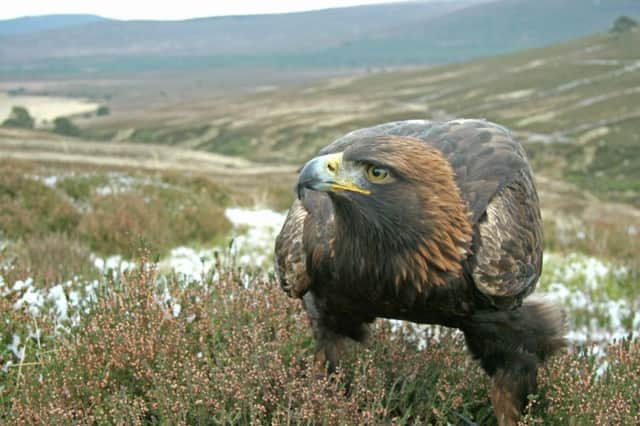RSPB pining to renew Caledonian forest


The conservation charity has unveiled proposals which would double the size of its Abernethy nature reserve in the Highlands, although the full results will not be realised properly for two centuries.
The Speyside forest hosts some of the rarest species in the UK, with around 12 per cent of the population of capercaillie, as well as Scottish crossbills, crested tits, wildcats, pine martens, black grouse, golden eagles and many rare mosses, fungi and plants, including twinflower.
Advertisement
Hide AdAdvertisement
Hide AdThe native Caledonian Forest pinewoods once covered around 3.7 million acres, but now all that exists are a few dozen remnants covering about 44,000 acres.
The project at RSPB’s Abernethy Forest will join up its existing woodland with the fragmented surrounding remnants and, according to the charity, give nature a bigger home in which to flourish.
Managing and reducing the grazing pressure on the reserve from deer over the past quarter century has already enabled the Scots pine trees of Abernethy forest to increase by self-seeded natural regeneration, with more than 800 hectares of new pine saplings now established.
Comprehensive surveys have revealed that many areas of Abernethy’s forest expansion zone have very few of the broadleaved tree species, while in other areas they are completely absent.
Jeremy Roberts, the senior site manager at Abernethy, said: “To give the forest a helping hand we are restoring these species, with the welcome help of local schools and volunteers.
“As these small groups mature they will themselves provide the seed source, restoring the forest to its diverse and species-rich former glory. It may well be that the children and grandchildren of the schoolchildren who have been assisting with the planting will be the ones who see the difference rather than us.”
The lack of tree diversity is threatening the future of some of the rarer species that require the full range of Caledonian forest species in order to survive and thrive.
Historic records of forestry operations and crofting on the reserve show that the remaining forest has been subject to felling, ploughing, draining, fencing and planting with non-native exotic species over the centuries, plus grazing by livestock, artificially high deer numbers and active removal of broadleaved trees.
Advertisement
Hide AdAdvertisement
Hide AdWith the exception of aspen, clones which have been sourced from on or very close to Abernethy, all the saplings are grown from seed or root cuttings of Abernethy provenance.
This ensures that the trees are as genetically close to the existing forest components as possible.
To establish important seed sources in this forest of the future, the conservation charity will plant close to 100,000 trees at the reserve, including birch, aspen, two species of willow and alders.
It is hoped that at least 40,000 of the planted saplings will survive grazing pressure from hares and other herbivores to reach maturity, leaving the full range of species and ensuring the forest’s continuity.
The restoration project is one of a number across Scotland, with other bodies and private estates, including Trees for Life, The National Trust for Scotland at Mar Lodge, Scottish Natural Heritage, Forestry Commission Scotland and estate managers at Alladale and Glen Feshie doing similar work.